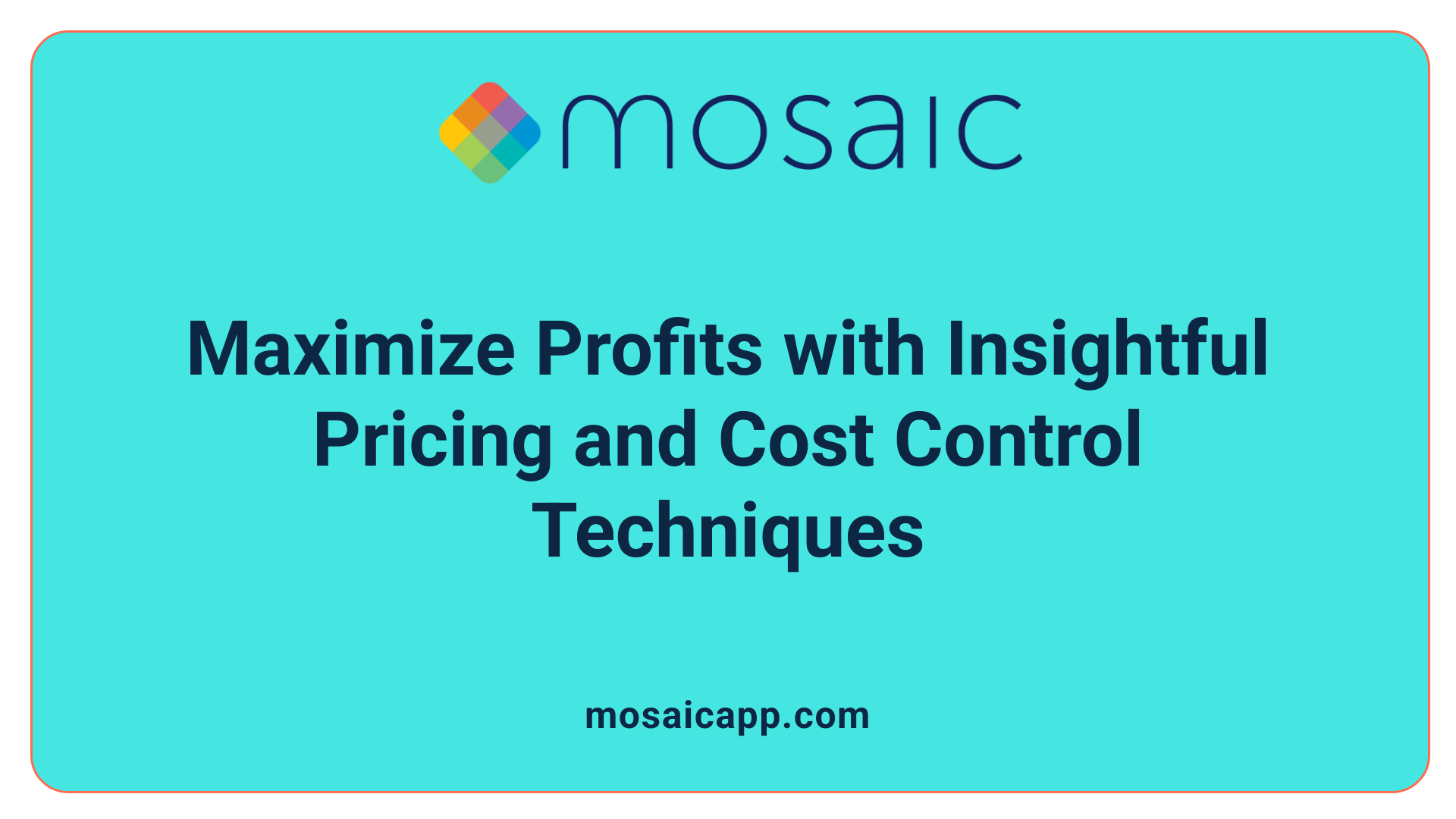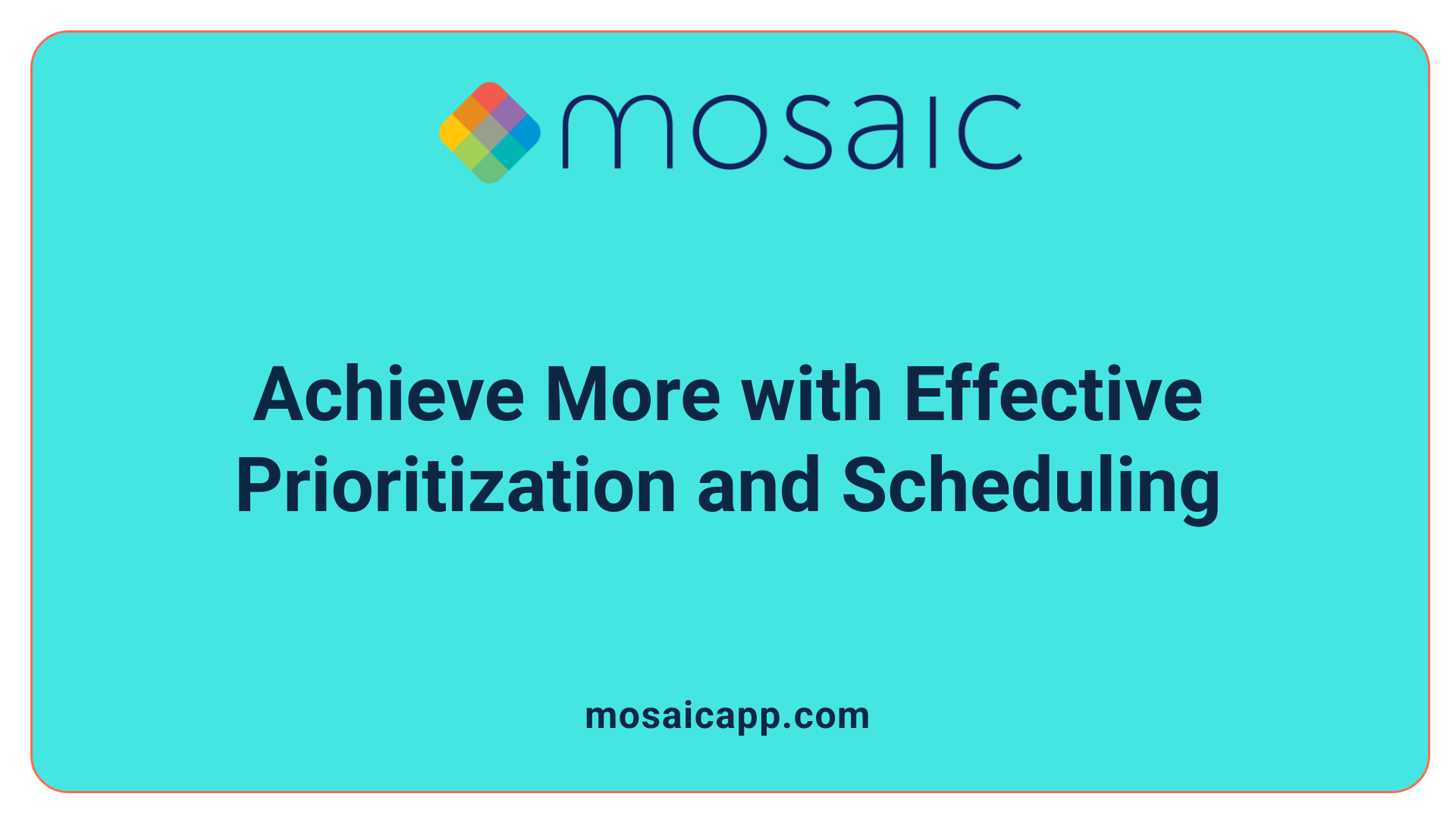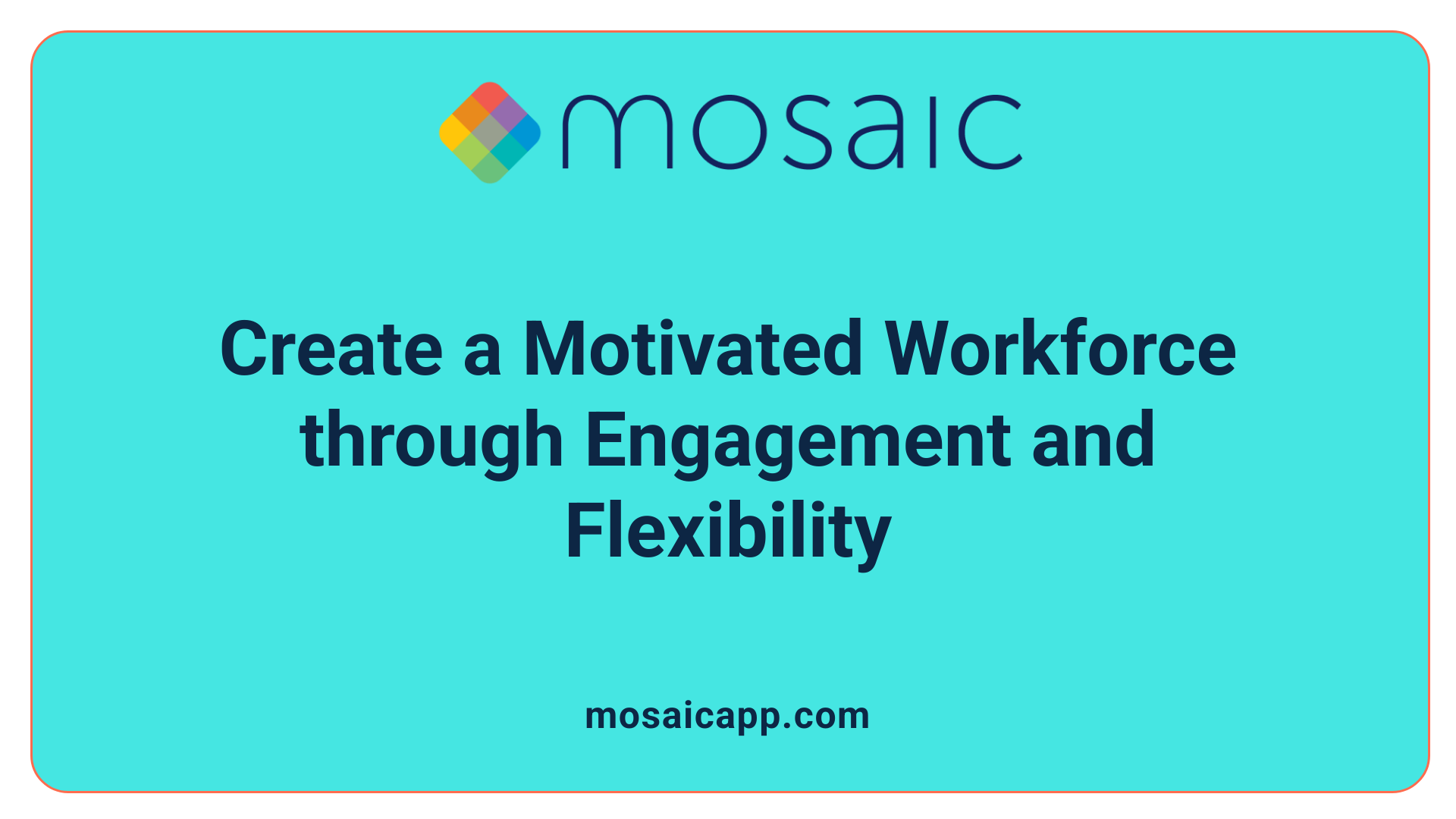Unlocking Sustainable Growth Through Strategic Balance
In todayâs competitive business environment, the ability to effectively balance workload while maximizing profit is vital for long-term success. Implementing targeted strategies can promote organizational efficiency, reduce stress, and cultivate a resilient, motivated workforceâall critical components for sustainable growth. This article explores five proven strategies that leaders can adopt to align workloads with profitability, ensuring both business health and employee well-being.
Key Facts List: Enhancing Organizational Productivity and Efficiency
- Effective workload management relies on capacity planning, technology tools, and data analytics.
- Project management software like Teamwork.com and resource planning tools such as Scoro help monitor and balance workload in real-time.
- Techniques like Eisenhower Matrix, Pomodoro Technique, and time-blocking assist in task prioritization and stress reduction.
- Automation tools like Zapier reduce manual errors and free up time for strategic tasks.
- Regular team check-ins, feedback sessions, and mental health practices support workplace well-being.
- Data-driven decision-making involves analyzing market trends, sales data, and resource utilization to optimize productivity.
- Strategic planning using Work Breakdown Structures (WBS) and Gantt charts helps prevent scope creep and over-utilization.
- Fostering employee engagement, professional development, and flexibility enhances motivation and work-life balance.
- Long-term sustainability incorporates purpose alignment, ESG metrics, and innovation for balanced growth.
- A combined approach of smart planning, technology adoption, and employee support sustains organizational resilience and profitability.
1. Strategic Workload Management Through Capacity Planning and Technology

How can I improve productivity and efficiency within my team or organization?
Enhancing productivity begins with understanding and managing workload effectively. Creating a positive environment by balancing team capacity, setting clear roles, and maintaining open communication reduces stress and prevents burnout. Utilizing advanced technology tools, such as project management software like Teamwork.com, helps organize tasks visually through dashboards, Gantt charts, and Kanban boards. These tools enable leaders to monitor project statuses and resource utilization in real-time, promoting transparency and quick decision-making.
Automating routine tasks like payroll and bookkeeping saves time and reduces human error. This frees up team members for higher-value work, increasing overall efficiency. Setting specific, measurable goals and leveraging data analyticsâcovering descriptive, predictive, and prescriptive analysisâallows organizations to identify bottlenecks and opportunities for improvement.
Furthermore, employing resource planning tools, such as Scoro's 'Bookings' module, assists in forecasting team workload, balancing project timelines, and avoiding over- or under-utilization. This strategic approach ensures that effort is allocated wisely, aligning workload with capacity to optimize output.
What techniques can help manage workload and reduce stress?
Managing workload effectively involves prioritizing tasks based on importance and urgency using frameworks like the Eisenhower Matrix. Breaking larger projects into smaller, manageable segments using methods like the Pomodoro Technique diminishes overwhelm and enhances focus.
Implementing time-blocking practices dedicates specific periods for deep work, meetings, and breaks, thereby improving concentration and reducing fatigue. Encouraging employees to identify their peak productivity hours helps tailor task scheduling, making work sessions more effective.
Delegation plays a vital roleâunderstanding individual team membersâ skills and interests allows for suitable task assignment, fostering engagement and skill development. Building a reliable freelance roster in advance ensures capacity flexibility during workload spikes, maintaining output quality.
Regular team meetings, check-ins, and feedback sessions facilitate workload distribution, promote clarity, and prevent overload. Enforcing boundaries to minimize distractions during work hours maintains focus. Incorporating stress management techniques like mindfulness exercises and ensuring employees take their scheduled breaks support mental health, sustaining high performance.
Overall, a balanced approach combining smart planning, technology use, delegation, and well-being strategies helps maintain an efficient, motivated workforce and achieves organizational goals.
Aspect Strategy Benefit Workload assessment Use project management and resource planning tools Enables real-time visibility, early issue detection Task prioritization Eisenhower Matrix, project prioritization frameworks Focuses on high-value activities, reduces waste Workflow automation Zapier, system integrations Reduces manual errors, saves time Employee engagement Feedback sessions, recognizing strengths Boosts morale, skill development Stress reduction Mindfulness, scheduled breaks Maintains mental health, productivity
This structured approach ensures your team remains productive while avoiding burnout, ultimately enhancing organizational profitability and stability.
2. Implementing Data-Driven Pricing and Cost Optimization

How can I improve productivity and efficiency within my team or organization?
Leveraging data analytics for strategic decision-makingâsuch as pricing strategies based on supply and demandâcan significantly enhance profit margins. By analyzing market trends, customer behavior, and sales data, businesses can set more accurate and flexible prices, adapting to external fluctuations in real-time.
Streamlining operations plays a vital role in boosting efficiency. This involves cutting unnecessary expenses, such as excess inventory and outdated processes. Implementing inventory management systems can help keep stock levels optimal, reducing waste and storage costs.
Reducing inefficiencies not only trims costs but also frees up resources that can be invested in growth initiatives. Combining effective pricing strategies with operational improvements creates a more resilient and profitable organization.
What techniques can help manage workload and reduce stress?
Effective workload management is essential for maintaining productivity and employee well-being. Clear project scope definitionâusing tools like Work Breakdown Structures (WBS)âhelps prevent scope creep and ensures clarity in responsibilities.
Prioritization methods, including project importance and urgency assessments, direct efforts toward high-value tasks. Breaking down large projects into smaller, manageable chunks prevents overwhelm and facilitates steady progress.
Regular project tracking using software tools like Gantt charts and dashboards helps identify potential bottlenecks early, allowing timely adjustments. Forecasting team workload through resource planning ensures balanced distribution, avoiding overloading key staff.
Incorporating these techniques not only enhances efficiency but also fosters a healthier work environment, reducing stress and burnout among team members.
Strategies Summary
Strategy Purpose Benefits Data Analytics for Pricing Adjust prices based on market insights Maximizes margins, responds to external factors Cost Reduction Eliminate waste and optimize resources Lowers expenses, boosts overall efficiency Clear Project Scope Define responsibilities with WBS Prevents scope creep and misalignment Prioritization Techniques Focus on high-impact tasks Ensures critical work gets done effectively Workload Forecasting Balance team capacity and project demands Reduces stress, prevents burnout
Additional Tools and Practices
Tool/Method Functionality Impact Business Analytics Software Analyzes sales, market trends to inform decisions Better pricing, cost control Inventory Management Systems Tracks stock levels and reduces excess inventory Cost savings, operational efficiency Project Management Software Visualizes workloads, deadlines, and responsibilities Improved coordination, early issue detection Time and Resource Planning Tools Forecasts workload and allocates resources accordingly Balanced team utilization, less stress
The integration of these approaches creates a cohesive system that not only maximizes profits through strategic pricing but also ensures that workload is managed effectively, fostering a productive and sustainable organizational environment.
3. Prioritization and Scheduling for Optimal Resource Utilization

What are effective strategies for balancing workload and maximizing profit?
To achieve a healthy balance between workload and profitability, businesses employ strategic prioritization and meticulous project planning. One fundamental approach is using prioritization frameworks that evaluate tasks based on importance and urgency. These frameworks help direct focus toward high-value activities that contribute most significantly to revenue and growth.
Additionally, structuring the overall project scope through a Work Breakdown Structure (WBS) clarifies phases, deliverables, timelines, and responsibilities. This detailed outline helps prevent scope creep, which can lead to resource overextension and decreased profits.
Monitoring team utilization rates is also essential for maintaining productivity and avoiding burnout. The recommended utilization range is about 70-80%. Staying within this window allows teams to work efficiently without overloading members, optimizing both output and employee well-being.
What techniques can help manage workload and reduce stress?
Effective workload management isn't just about task allocation; it's also about managing stress levels proactively. Time-blocking is a highly effective technique, where dedicated periods are set aside for deep work, meetings, and breaks. This structure helps improve focus and prevents work from spilling over into personal time, reducing stress.
Regular check-ins and project tracking tools such as Gantt charts facilitate early identification of workload issues. These tools provide a visual overview of project timelines, resource allocation, and potential bottlenecks. Allowing managers to make timely adjustments ensures smoother workflows and balanced workloads.
Implementing these strategies promotes a work environment where productivity is maximized without sacrificing employee health or job satisfaction. Regularly reviewing workload distribution ensures continuous alignment with business goals and reduces the risk of burnout, ultimately supporting long-term profitability.
4. Fostering a Culture of Engagement and Flexibility

How can I improve productivity and efficiency within my team or organization?
Enhancing productivity starts with empowering employees. Recognizing individual strengths and offering professional development opportunities boosts motivation and engagement. When team members feel valued and supported, they are more likely to contribute their best work.
Creating a flexible work environment is equally important. Clear boundaries around distractions, such as designated focus hours and the use of focus tools, help employees maintain their concentration. Additionally, establishing open channels of communication about expectations and progress ensures that everyone stays aligned.
Implementing technology, like project management tools and automation, can streamline workflows and reduce manual tasks. This allows team members to devote more time to high-impact activities. Furthermore, teaching effective workload management techniquesâsuch as time-blocking and prioritizationâimproves overall efficiency.
What actionable steps can be taken to maintain a healthy work-life balance and foster business growth?
Maintaining a healthy work-life balance involves setting clear boundaries around working hours. Encouraging employees to switch off after work and during breaks helps prevent burnout. Promoting flexible scheduling accommodates individual productivity peaks, whether some work better early in the morning or late at night.
Leveraging automation tools can free up time for strategic initiatives, enabling businesses to focus on growth opportunities. Supporting wellbeing activitiesâlike promoting exercise, sleep, and mental healthâfurther sustains a motivated workforce.
Fostering a culture of continuous feedback and recognition contributes to a positive environment where employees feel appreciated for their contributions. Regular check-ins, performance reviews, and recognition programs reinforce engagement and morale.
Creating an environment where employees feel trusted and valued encourages a balanced approach to work and personal life, which in turn supports long-term business development.
Strategy Action Benefits Empowering employees Recognize strengths and offer development Increased motivation and skill growth Building work flexibility Implement clear boundaries and flexible hours Improved focus and work satisfaction Continuous feedback Regular check-ins and recognition Enhanced engagement and morale
Additional Insights
Creating an engaged and flexible workforce is vital to achieving productivity and balance. By investing in employee development, setting boundaries, and fostering open communication, organizations can build a resilient, motivated team capable of driving sustained growth while maintaining well-being.
This balanced approach not only improves work outcomes but also strengthens the overall organizational culture, leading to better retention, higher satisfaction, and increased profitability.
5. Long-Term Strategic Planning and Sustainability Integration
How can I improve productivity and efficiency within my team or organization?
Enhancing productivity and efficiency begins with developing a strategic plan that emphasizes high-level planning, stress testing, and identifying new growth opportunities. This approach ensures that organizational efforts are aligned with long-term goals, enabling teams to work more effectively and adapt to market changes.
Implementing structured project management methodsâsuch as work breakdown structures, workload forecasting, and priority frameworksâcan help monitor resource utilization and prevent overloads. Use tools like Gantt charts, dashboards, and time-tracking software to visualize progress, allocate tasks efficiently, and identify potential bottlenecks early on.
Promoting automation of repetitive tasks through technologyâsuch as Zapier integrations or built-in application featuresâfrees up valuable time for staff to focus on strategic initiatives. Additionally, fostering a culture of continuous improvement, regular communication, and feedback ensures adjustments are made promptly, amplifying overall organizational effectiveness.
What are best practices for integrating purpose and profitability in business?
Authentic purpose serves as a foundation for sustainable growth. Leading with clear, shared core valuesâsuch as integrity, diversity, mentorship, and innovationâhelps create a cohesive culture focused on long-term impact.
Organizations should set transparent impact goals and report progress openly to demonstrate accountability. Leveraging ESG (Environmental, Social, and Governance) metrics and integrating them into decision-making processes highlights a commitment to sustainability.
Encouraging innovative thinking and aligning business strategies with societal benefits fosters a balanced approach to purpose and profitability. This integration not only enhances brand reputation but also attracts investors, employees, and customers who value responsible business practices.
What actionable steps can be taken to maintain a healthy work-life balance and foster business growth?
Maintaining a healthy work-life balance involves regular strategic reviews that focus on growth, cost management, and stakeholder engagement. These reviews help prioritize projects, allocate resources effectively, and set realistic expectations.
Scheduling regular check-ins and team meetings ensures workload distribution remains manageable and that employees feel supported. Promoting workload management strategiesâsuch as time blocking, setting boundaries around distractions, and encouraging focus periodsâreduces stress and prevents burnout.
Supporting employee development through training, mentorship, and growth opportunities not only enhances skills but also boosts motivation and long-term retention. Creating an environment where feedback is valued helps identify issues early, allowing for swift adjustments.
By aligning organizational objectives with personal well-being and professional development, businesses can sustain growth while fostering a motivated and resilient workforce. Regularly revisiting strategic plans ensures the organization remains adaptable to economic cycles and societal shifts, maintaining a solid foundation for future success.
How can I improve productivity and efficiency within my team or organization?
Creating a healthy work environment
A productive team starts with a balanced and supportive work atmosphere. Managing workloads effectively prevents burnout and keeps morale high. Setting clear boundaries around work hours, such as discouraging after-hours emails, helps employees maintain a healthy work-life balance. Regular team meetings and open communication channels foster transparency and trust, enabling team members to voice concerns and suggest improvements.
To further enhance engagement, organizations should focus on fostering an inclusive culture centered around core values like integrity, accountability, mentorship, and diversity. Recognizing employee strengths and providing opportunities for growth boosts confidence and motivation, creating a motivated and stable workforce.
Leveraging technology
Utilizing technology tools can significantly improve team efficiency. Project management software like Teamwork.com allows teams to organize, plan, and visualize workloads with dashboards, Kanban boards, and Gantt charts. These tools help in workload assignments, tracking progress, and identifying bottlenecks early.
Automation is another powerful approach. Automating repetitive tasks such as payroll or bookkeeping with systems like Zapier frees up valuable time and reduces human errors. Real-time project tracking and time management applications support better workload distribution and help ensure tasks are completed on schedule.
Data-driven decision-making
Making informed choices is essential for continuous improvement. Analyzing productivity metrics like utilization rates, task completion times, and project timelines provides insights into what is working well and where adjustments are needed.
Employing structured prioritization frameworks â such as evaluating the importance and urgency of projects â helps focus resources on high-impact activities. This method minimizes wasted effort on low-priority work.
Using data also guides strategic decisions like resource allocation and skill development. For example, understanding skill gaps through performance analytics can inform targeted training, boosting overall team capability.
Techniques to Manage Workload and Reduce Stress
Effective workload management includes setting realistic goals, breaking projects into smaller, manageable chunks (like the Pomodoro Technique), and leveraging task prioritization tools such as the Eisenhower Matrix.
Delegating tasks based on team membersâ skills ensures balanced distribution and prevents overload. Encouraging focused work periods while clustering related activities enhances productivity.
Supporting employee well-being is equally important. Encouraging regular breaks, physical activity, and mindfulness practices mitigates stress. Promoting open communication ensures team members can voice overload concerns before burnout occurs.
Implementing such strategies creates a resilient, engaged, and high-performing organization. When staff feel supported and empowered, productivity naturally increases, and overall organizational health improves.
Balancing Act for Lasting Success
Successfully balancing workload with profitability requires deliberate strategies that encompass operational efficiency, workforce engagement, financial acumen, and long-term vision. By adopting integrated approachesâranging from intelligent workload management and data-driven pricing to cultivating a flexible, purpose-driven cultureâbusinesses can sustain growth, enhance employee well-being, and achieve lasting success. Continual assessment and adaptation of these strategies will ensure organizations remain resilient, competitive, and aligned with their core mission.

